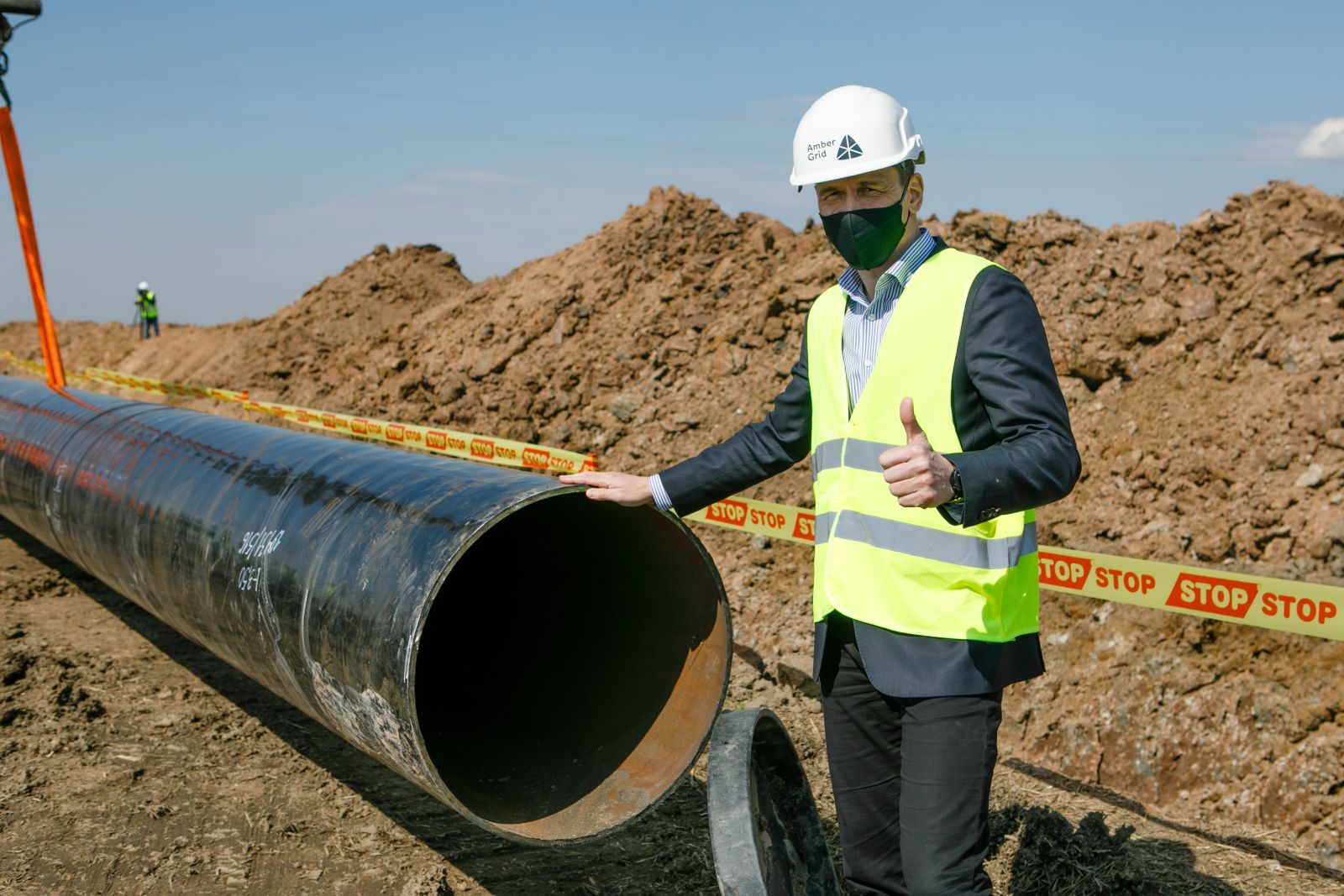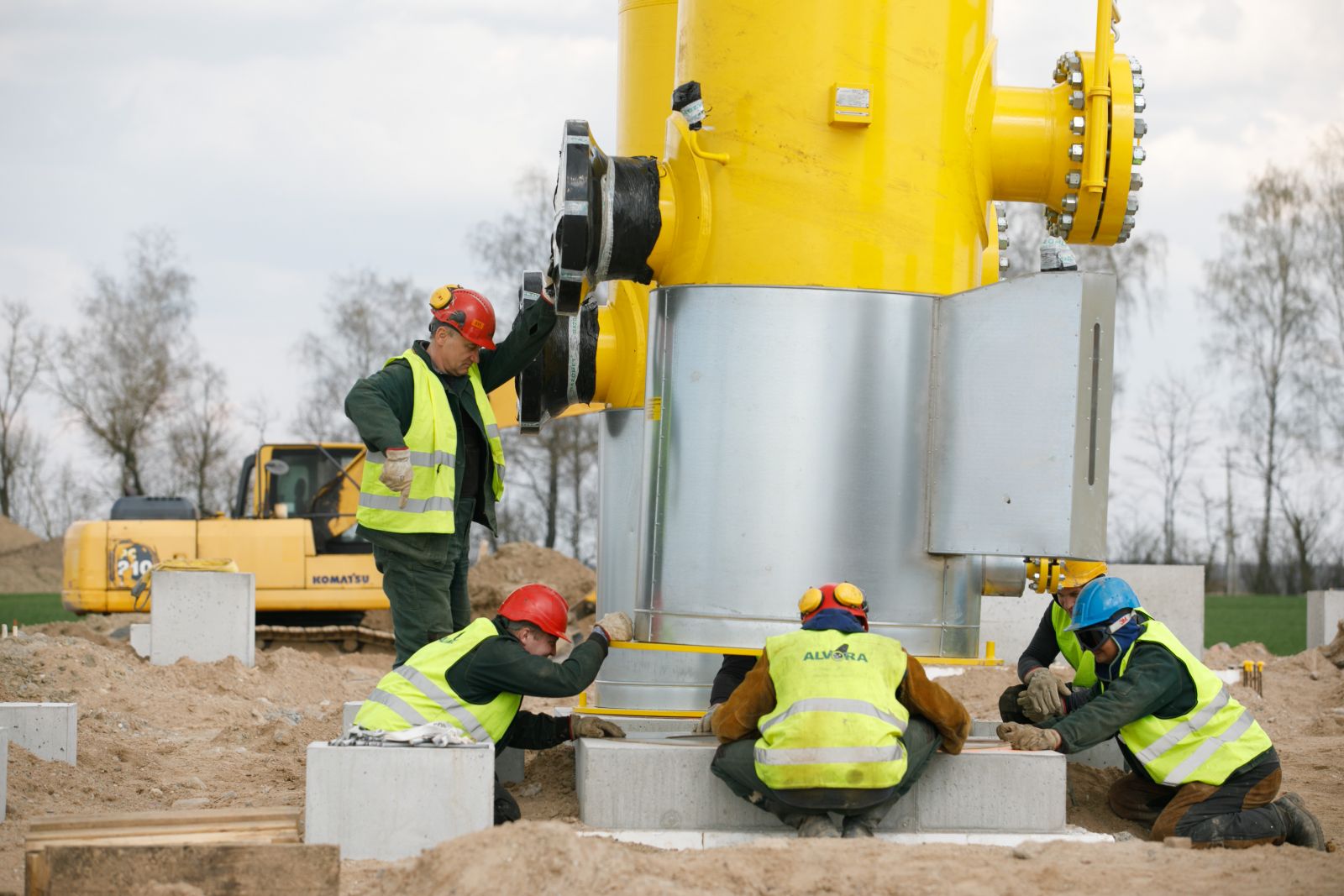After completion of three quarters of the construction work for the Gas Interconnection Poland-Lithuania (GIPL), the final phase – construction of the gas pressure regulating and metering station – is now under way.
“Next year, when the Lithuanian-Polish gas interconnection is opened to the market, Lithuania will become the principal gas transit and trading hub for the Baltic States and Finland,” said Minister of Energy Dainius Kreivys, who visited the construction site.
“By implementing one of the most important projects for strengthening energy independence, we will not only ensure reliable gas supply. The GIPL paves the way for integrating the isolated Baltic gas market into the European market, so the pipeline will undoubtedly bring economic benefits as well. First of all, by expanding the interconnections, we will open up the market to new gas suppliers, who will create more competition. Second of all, we will create conditions to make even better use of the developed gas infrastructure. The exchange of energy resources will also be ensured by further strengthening relations with a very important partner of Lithuania – Poland,” says Mr Kreivys.
After beginning installation of the gas pipeline last year, 75 per cent of the work has currently been completed, despite the challenges posed by the pandemic. The international gas pipeline has essentially already been constructed through Lithuania to the border with Poland.
The GIPL will become an important link connecting gas supply points and pipelines in the Baltic region with Poland and all of continental Europe. The two-way GIPL will allow gas to be transported from Europe to Lithuania, and from Lithuania to Poland. With an alternative source of gas supply, Lithuania will become independent of its supplier from the East; for Poland, the new gas route will help reduce the country’s energy dependence on coal, a polluting fossil fuel. By becoming part of the huge gas market, new opportunities will open up to participate in the Polish and European markets, for Lithuanian suppliers to expand their customer portfolio, to create new instruments for the market in gas trading, and to increase usage of the LNG terminal in Klaipėda.
“By building the gas pipeline infrastructure, we are already developing a dialogue with future interconnection users. Local and foreign market participants are taking an active interest in the GIPL’s capacity, pricing and new trade products that increase the maturity of the gas market. We’re developing flexible services that allow everywhere from the smallest to the largest energy quantities to be transported via gas pipeline. This is very attractive for market participants, and creates opportunities for us to attract a large number of players. We’re planning that information about ordering the first GIPL capacities will be provided to the market in the middle of this year,” said Nemunas Biknius, who is the CEO of Amber Grid, the gas transmission system operator implementing the GIPL project.

After beginning construction of the GIPL in January 2020, the most complex jobs of installing the gas pipelines under rivers and connecting them to the Lithuanian gas transmission system have already been completed. The total route length of the gas interconnection in Lithuania is 165 km. During implementation of the project, archaeological research and searches for explosives were conducted along the pipeline route. Project implementation is being supervised by environmental protection specialists, and significant attention is being given to constant interaction with the nearby communities and landowners. The total value of the GIPL project is EUR 117 million; 60 per cent of the necessary funds have been provided by the European Union.
Completion of the gas interconnection in late 2021 will make it possible to transport up to 27 terawatt-hours (TWh) of gas per year to the Baltic States, and up to 21 TWh per year to Poland, which will account for half of the capacity of the Klaipėda LNG terminal.



